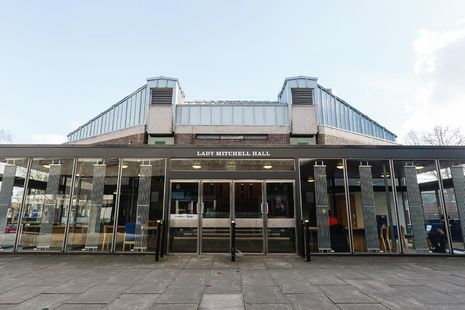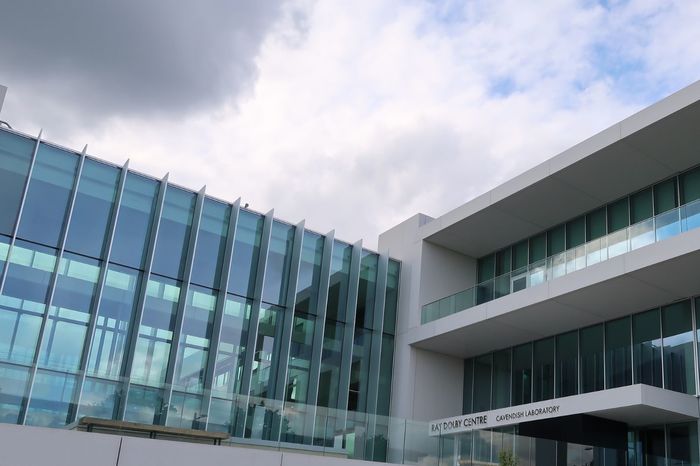A brutal truth: how Brutalist architecture reflects an undervaluing of the humanities
Loveday Cookson argues that, architectural tastes aside, the Brutalist design of humanities buildings is indicative of the systemic underfunding and undervaluing of the liberal arts field

When asked in Year Five what I wanted to be when I grew up, I confidently declared I was going to be an architect. I’d done well on my practice Maths SAT and was really good at drawing horses, so it felt only natural as a decision. My passion for Maths decayed the further I went through the education system, and there are only so many horses to be drawn, resulting in my degree being more about locking myself in the library with the literary tome of the week rather than planning the next skyscraper.
Despite this pivoting of ambition, my interest in architecture still finds root occasionally, especially when those libraries I house myself in so frequently are the ones forming the beloved Sidgwick Site. Stippled by a delectable mix of Brutalist architecture, the lack of funding screams from every geometric pillar and concrete corner. For a place so saturated with potential and creativity, there’s an innate hostility bred into every crevice, punctuated only by the sleek exterior of the Squire Law Library, a glass monument among swathes of grey.
“Stippled by a delectable mix of Brutalist architecture, the lack of funding screams from every geometric pillar and concrete corner”
It is more akin to West Hub, the swish science department – the kind of site that adorns university prospectuses, assuring future students of an institution’s modernity and facilities, while Sidgwick is the concealed footnote. The common denominator between the Law building and West Hub? Money. The only buildings that are worth pouring money into appear to be those that offer monetizable careers, but I don’t want to be a lawyer or a scientist – what if I just want to read about tree poetry or draw horses?
I have a strange fondness for Sidgwick. It may not be exactly what people conjure in their minds when they envisage Cambridge – there’s certainly a lot more grey and fewer grand staircases – but my daily commute has given me some of my closest friends. My friends dashing from their final exams to spray me with prosecco outside of the lecture block after my first-year exam is one of my warmest Cambridge memories. But Sidgwick remains aesthetically unconducive to romanticisation and fond reflection. The hardened exteriors of the site appear curiously antithetical to what these buildings hold within their concrete parameters.
“Humanities deserve more than concrete, but a concrete commitment to their continuation”
But it isn’t just about architecture; the stone monuments we call the humanities faculties are indicative of broader financial discrepancies between disciplines. While STEM students have every lab, practical and research project covered by their tuition, I am still confronted every term with a financially unsupported reading list. The same story emerges when pursuing postgraduate education, work experience, or internships; there is so little funding for humanities that it becomes a self-selecting group based just as much on financial privilege as talent.
I am not opposed to Brutalist architecture – I think the National Theatre is dynamic, visually striking and as compelling as the work it houses. However, I reject Brutalism as a means of denying the arts equitable funding, an aesthetically barren rejection of the value humanities may offer. I have a healthy appreciation for STEM in that I’m an enjoyer of modern medicine, roads, and bridges, but I increasingly find myself angered by the growing dichotomy between the value humanities are given, becoming – as a mug Hannah Gillott exhibited when I interviewed her about her room last year – a ‘woman against STEM’. My issue isn’t really with STEM or even with Brutalist architecture, although the shadows cast by Sidgwick’s concrete enormity will probably give me a vitamin D deficiency. I love the feeling of the sticky sap-laden concrete, and the smell of Easter term’s warm prosecco; I just want to see the talent held within these spaces echoed in their design. Humanities deserve more than concrete, but a concrete commitment to their continuation.
 News / Cambridge students accused of ‘gleeful’ racist hate crime4 December 2025
News / Cambridge students accused of ‘gleeful’ racist hate crime4 December 2025 News / Churchill announces June Event in place of May Ball3 December 2025
News / Churchill announces June Event in place of May Ball3 December 2025 News / Cambridge cosies up to Reform UK30 November 2025
News / Cambridge cosies up to Reform UK30 November 2025 Comment / Don’t get lost in the Bermuda Triangle of job hunting 24 November 2025
Comment / Don’t get lost in the Bermuda Triangle of job hunting 24 November 2025 Lifestyle / Thank god for breakups4 December 2025
Lifestyle / Thank god for breakups4 December 2025










